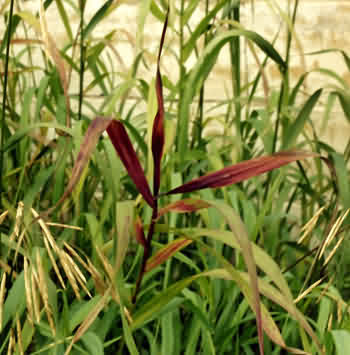Diseases
Barley Yellow Dwarf luteovirus - Barley Yellow Dwarf Virus (BYDV)
Systematic position.
Kingdom Vira, Group Luteovirus, family Luteoviridae. Strains and acronyms: BYDV-MAV, BYDV-PAV, BYDV-RMV, BYDV-RPV, BYDV-SGV (Rochow 1986). ICTV decimal code: 39.0.1.1.001.Synonyms.
Cereal yellow dwarf virus, Hordeum nanescens virus, Oat red leaf virus, Rice giallume virus, Ryegrass chlorotic streak virus, possibly Maize leaf fleck virus.Biological group.
Biotroph.Morphology and biology.
BYDV causes chlorosis, yellowing, reddening of leaves, delay in growth and bushiness in many main cereals. BYDV has spherical particles of 28-30 nm in diameter; temperature for the virus inactivation is 40-50.C, limiting dilution is 1:100, loss of infectivity in sap is 5 hours. BYDV belongs to a group of pathogens forming natural foci, being one of the most widespread and harmful phytoviruses. BYDV spread in nature is realized by means of aphid vectors. More than 20 species of aphids are known, being able to transfer the virus from wild-growing plants to cultural ones. In most cases, epiphytoties are provoked by such aphid species as Rhopalosiphum padi L. , Rh. maidis F., Shizaphis graminum Rond., Sitobion avenae F. The first species is most frequently registered as the main vector of development of BYDV epiphytoties.Distribution.
The virus is probably distributed worldwide. BYDV is distributed everywhere in the territory of the European part of the former USSR. The disease severity area coincides with the area of cereal cultivation, being registered in the Baltic States, Byelorussia, Moldova, Ukraine, in Norhern Caucasus, Central and North-Western regions of Russia.Ecology.
Distribution of BYDV is first determined by presence of nature foci and by number of aphid carriers; population density of the latter depends on ecological factors.Economic significance.
Broad specialization of BYDV allows infecting many cultural plants; yield losses of cereals can reach 35-75%. BYDV is especially harmful in the Northern Caucasus, Krasnodar Territory, Rostov Region, and Middle Volga Basin. Control measures should basically include chemical treatments against aphids (vectors) and weeds (nature sources of the virus).Reference citations:
Brunt, A.A., Crabtree, K., Dallwitz, M.J., Gibbs, A.J., Watson, L. & Zurcher, E.J., eds. 1996-2006. Plant Viruses Online: Descriptions and Lists from the VIDE Database. Version: 20th August 1996. URL http://biology.anu.edu.au/Groups/MES/vide/Dubonosov, T.S., Panarin, I.V. & Kanevcheva, I.S., 1975. Viruses diseases of cereals. Moscow: Kolos, 118 p. (in Russian).
Rasvyazkina, G.M., Belanchikova, Yu.V. & Pridantseva, E.A., 1967. Epiphitoties of viruses on cereals in Krasnodar Territory. Biologicheskie nauki 12: 118-122 (in Russian).
Rochow, W.F. 1986, Barley yellow dwarf virus. In: Bergmeyer H.U. & Grassl M., eds. Methods of Enzymatic Analysis, Vol. XI; Weinheim: Chemie Verlag, Germany, p. 420.
Tsyplenkov, A.E. & Berim, M.N. 2004. Barley yellow dwarf virus. Information leaflet. Saint Petesburg: VIZR, 6 p. (in Russian).
Tsyplenkov, A.E. & Berim, M.N. 2005. Forming natural foci for Barley yellow dwarf virus. Zashchita i karantin rastenii 4: 49 -51 (in Russian).
Vlasov, Yu.I., Mitrophanov, Yu.I., Udkin, l.Yu., Teploukhova, T.N., Larina, E.I. & Obruchkov, V.S., 1992. Methodical guide field and laboratory diagnostics of barley yellow dwarf virus (BYDV). S. Petesburg-Tver: VIZR, 20 p. (in Russian).
Vlasov, Yu.I., Teploukhova, T.N. & Larina, E.I., 1990. Survey, identification and bases of epiphytoties of Barley yellow dwarf virus (BYDV) (Methodical guide). Moscow: VASKHNIL, 19 p. (in Russian).
Zhola, I. 1970. Streak mosaic and barley yellow dwarf virus in Latvia. PhD Thesis. Riga: Latvian Academy of Science, 35 p. (in Russian).


